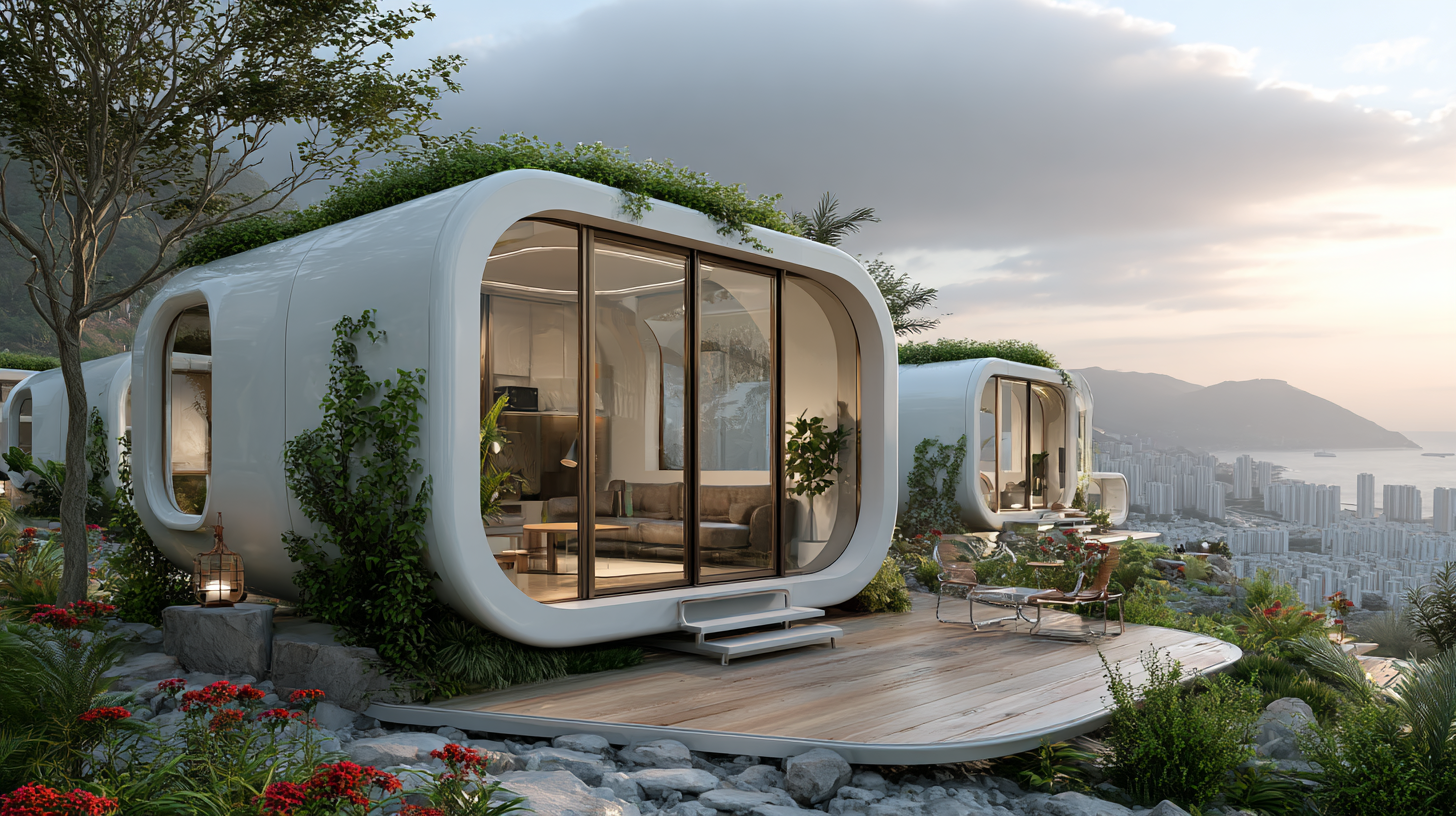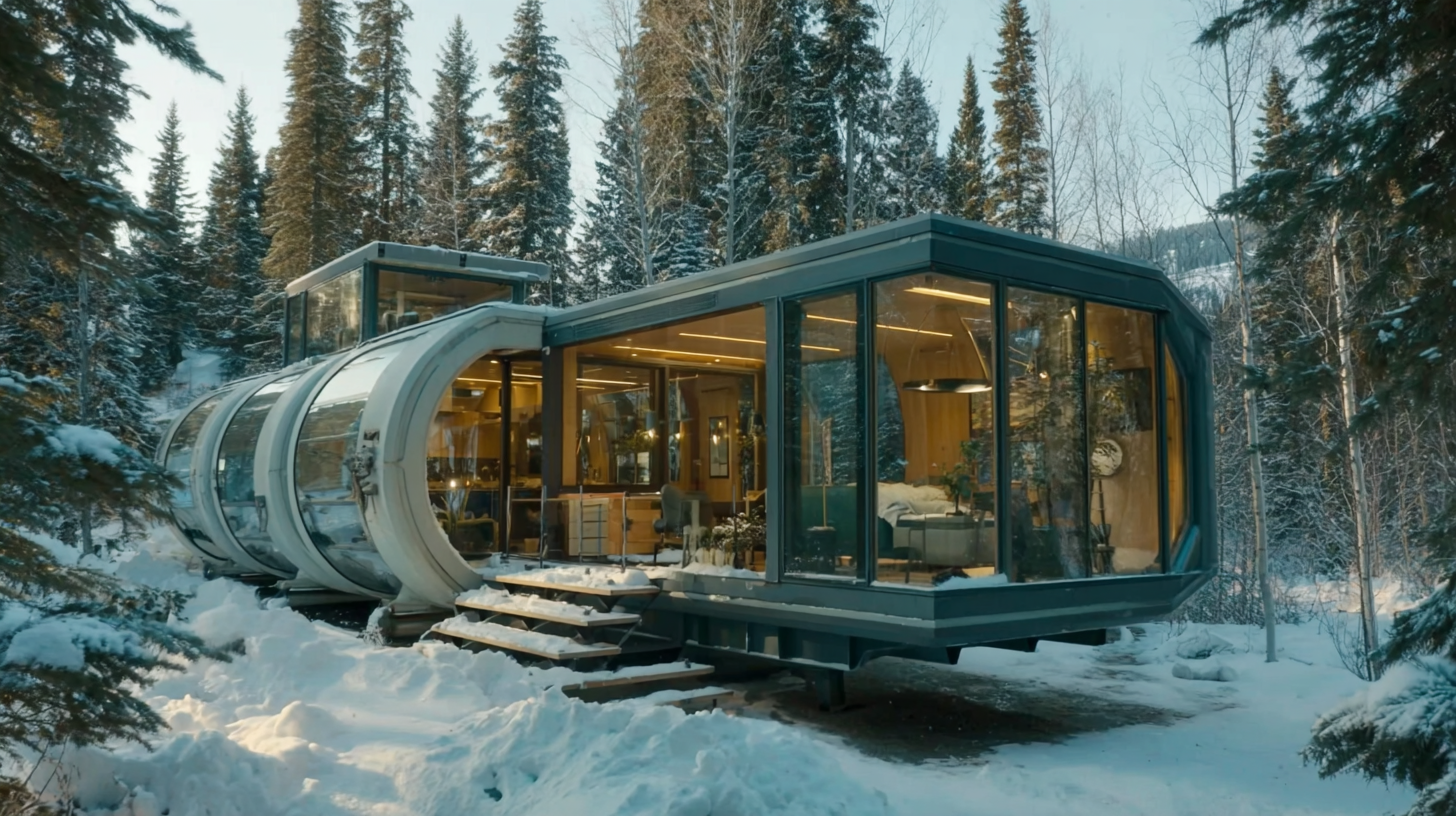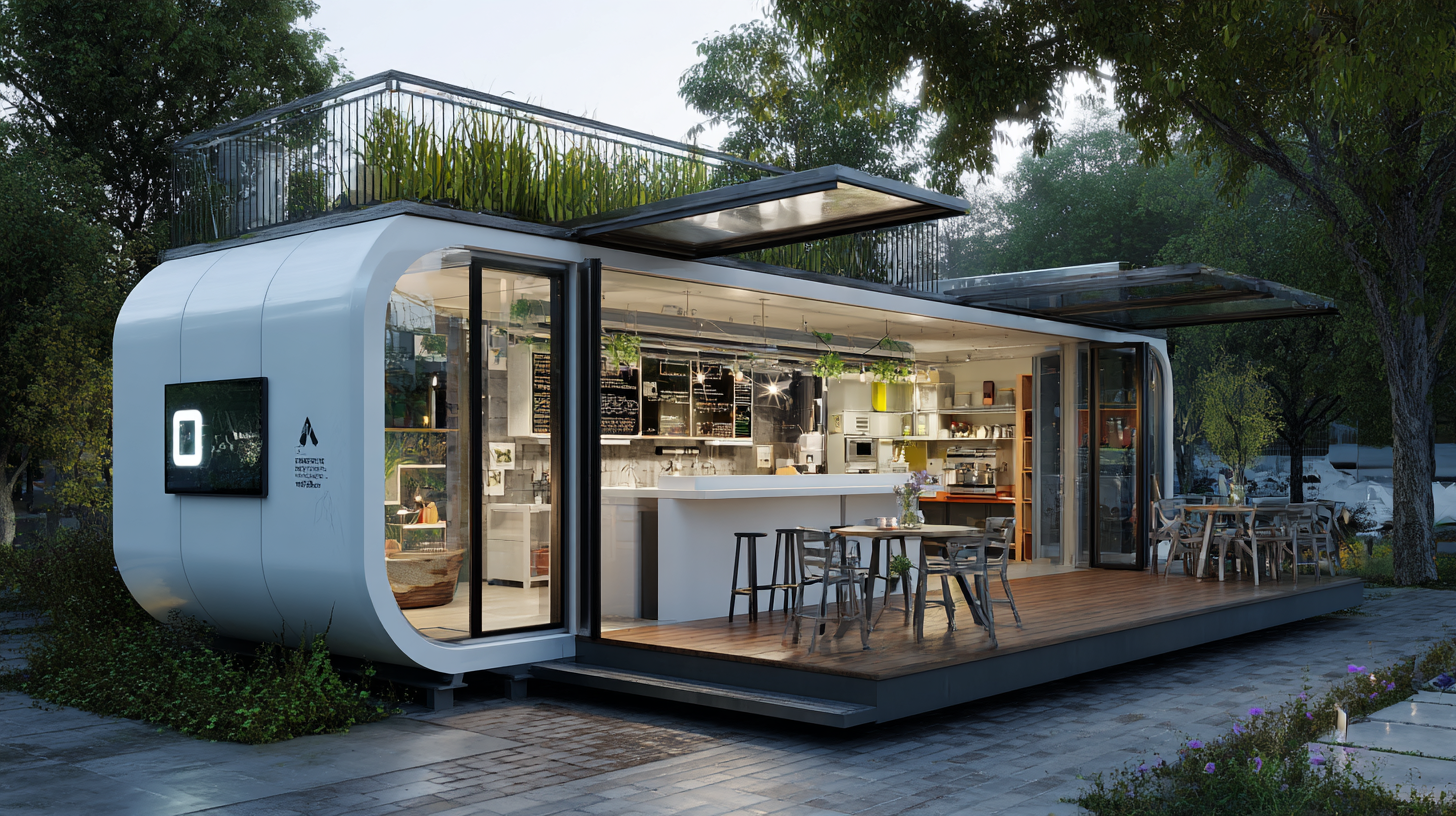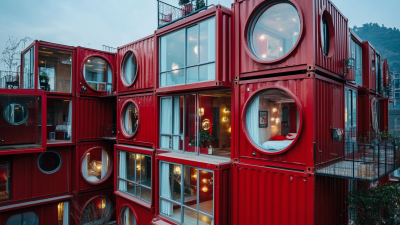
News
Exploring the Future of Sustainable Living: The Rise of Capsule Container Houses
 As the world grapples with the urgent need for sustainable living solutions,
the emergence of innovative housing concepts like the Capsule Container House is gaining traction.
According to a recent report by the Global Environmental Change journal, urban areas are projected to consume over 75%
of the world's resources by 2050, underscoring the necessity for eco-friendly building designs.
Capsule Container Houses, which repurpose shipping containers into functional living spaces, not only minimize waste but also significantly reduce construction time and costs—reportedly by
up to 30% in some cases. Furthermore, a study by Sustainable Homes indicates that container houses can achieve
energy efficiency ratings surpassing conventional homes by approximately 20%, making them an attractive alternative for environmentally
conscious consumers. This exploration into Capsule Container Houses represents a pivotal shift towards embracing sustainable lifestyles, with
the potential to reshape our urban environments for future generations.
As the world grapples with the urgent need for sustainable living solutions,
the emergence of innovative housing concepts like the Capsule Container House is gaining traction.
According to a recent report by the Global Environmental Change journal, urban areas are projected to consume over 75%
of the world's resources by 2050, underscoring the necessity for eco-friendly building designs.
Capsule Container Houses, which repurpose shipping containers into functional living spaces, not only minimize waste but also significantly reduce construction time and costs—reportedly by
up to 30% in some cases. Furthermore, a study by Sustainable Homes indicates that container houses can achieve
energy efficiency ratings surpassing conventional homes by approximately 20%, making them an attractive alternative for environmentally
conscious consumers. This exploration into Capsule Container Houses represents a pivotal shift towards embracing sustainable lifestyles, with
the potential to reshape our urban environments for future generations.
Understanding Capsule Container Houses: Key Features and Benefits
Capsule container houses are gaining traction as a sustainable living solution, particularly in urban areas facing housing shortages. These innovative structures are typically made from repurposed shipping containers, providing a cost-effective and eco-friendly alternative to traditional buildings. According to a report by the United Nations, the global urban population is expected to reach 6.7 billion by 2050, intensifying the need for sustainable housing solutions. Capsule container houses can be erected in a fraction of the time as conventional homes, with some projects completed in as little as three months, significantly reducing the carbon footprint associated with the construction process.
One of the key features of capsule container houses is their modular design, which allows for flexible living spaces that can be customized to meet individual needs. These houses are highly durable and typically require minimal maintenance, making them an attractive option for both homeowners and investors alike. A study from the International Energy Agency (IEA) suggests that container homes can save up to 50% in energy consumption compared to traditional homes, thanks to their efficient insulation properties. Furthermore, the compact nature of these units promotes a minimalist lifestyle, encouraging residents to reduce their consumption and embrace sustainable living practices.

Choosing the Right Location for Your Capsule Container Home
Choosing the right location for your capsule container home is a crucial step in embracing sustainable living. The ideal site not only influences the ecological footprint of your home but also enhances your quality of life. Factors such as access to natural resources, climate conditions, and proximity to urban amenities must be carefully considered. For instance, positioning your home near public transport can reduce reliance on cars, further minimizing environmental impact.
Additionally, the surrounding environment plays a significant role in the overall success of a capsule container house. Choosing a location with ample sunlight is vital for sustainable energy practices, allowing homeowners to utilize solar panels efficiently. Moreover, being near green spaces can promote a healthier lifestyle and foster a connection with nature. By prioritizing these elements, individuals can create a harmonious living space that aligns with sustainable values while reaping the benefits of modern, minimalist architecture.
Exploring the Future of Sustainable Living: The Rise of Capsule Container Houses
This chart presents key sustainability factors associated with capsule container homes, showcasing their potential effectiveness in promoting sustainable living. Each factor is rated on a scale from 1 to 10.
Design and Customization: Making Your Capsule Space Unique
The evolution of living spaces towards sustainability is gaining momentum, with capsule container houses at the forefront of this movement. These innovative homes not only offer a compact lifestyle but also emphasize customization, allowing residents to tailor their environment to reflect personal tastes and lifestyles. The trend of "chaotic customization" predicted for Gen Z highlights the desire for over-the-top and individualistic designs, aligning perfectly with the concept of capsule living. This individuality transforms a simple container into a unique sanctuary, merging function with personal flair.

Recent events in the design world, such as exclusive launches and creative showcases, underscore the importance of personalization in modern living. Whether it’s bespoke furniture collections or distinctive travel containers, the call for unique and stylish designs resonates across various industries. As more people seek to express their identities through their living spaces, capsule container houses stand out as the perfect canvas for artistic expression and innovative design, paving the way for a future where sustainable living is not only practical but also profoundly personal.
Sustainable Living Practices in Capsule Container Homes
As sustainable living becomes increasingly important in the face of climate change, capsule container houses are emerging as a viable option for eco-conscious individuals. These compact homes, often made from repurposed shipping containers, not only minimize construction waste but also promote a minimalist lifestyle. The versatility of these structures allows for unique designs that utilize space efficiently, encouraging residents to reduce their consumption and energy use.
Tip: When considering a capsule container home, focus on energy-efficient appliances and renewable energy sources such as solar panels. This will not only lower your utility bills but also minimize your carbon footprint.
Additionally, capsule container homes often thrive on innovative sustainable practices, such as rainwater harvesting and vertical gardening. By incorporating these systems, homeowners can foster self-sufficiency and reduce reliance on external resources.
Tip: Embrace indoor plants and create a small vertical garden! This not only purifies the air but also contributes to food sustainability by allowing you to grow herbs and vegetables right at home.
Exploring the Future of Sustainable Living: The Rise of Capsule Container Houses
| Feature | Description | Sustainability Rating | Cost Range (USD) |
|---|---|---|---|
| Energy Efficiency | Utilizes solar panels and high-insulation materials to minimize energy consumption. | High | 20,000 - 50,000 |
| Material Use | Constructed from recycled shipping containers, reducing waste. | High | 15,000 - 35,000 |
| Water Conservation | Equipped with rainwater harvesting systems and low-flow fixtures. | Moderate to High | 18,000 - 40,000 |
| Mobility | Easily transportable, allowing flexible living arrangements. | N/A | 16,000 - 28,000 |
| Community Impact | Promotes community building and shared resources among residents. | High | Varies |
Financial Considerations: Costs and Financing Options for Your Build
The rise of capsule container houses marks a significant shift towards sustainable living, but understanding the financial considerations is crucial for potential builders. Before embarking on your journey, it's essential to evaluate the total costs involved. While capsule homes can be cost-effective compared to traditional homes, expenses such as land acquisition, permits, and utilities must be factored in. The initial investment may seem daunting, but the long-term benefits of reduced energy costs and maintenance can be favorable.
Tips for financing your capsule container build can be invaluable. First, consider exploring green financing options, which may offer lower interest rates or incentives for sustainable construction. Additionally, local grants or subsidies aimed at eco-friendly projects could alleviate some financial burdens. Finally, budgeting meticulously and possibly collaborating with a financial advisor to create a realistic plan can help streamline the construction process and keep costs in check. With careful financial planning, turning your sustainable living dreams into reality can be more achievable than you think.
Related Posts
-

Finding Premium Suppliers for Smart Capsule House Your Essential Guide and Checklist
-

Navigating Tariff Challenges: How China's Best Capsule Container Houses Thrive Amidst US-China Trade Tensions
-

Ultimate Guide to Building Your Own Chinese Capsule House
-

Discover the Finest Capsule Space Houses from China’s Leading Manufacturing Factory
-

Innovative Solutions for Building Sustainable Capsule House Communities
-

Explore the Future of Capsule Homes at the 138th Canton Fair Global Trade Opportunity Awaits
